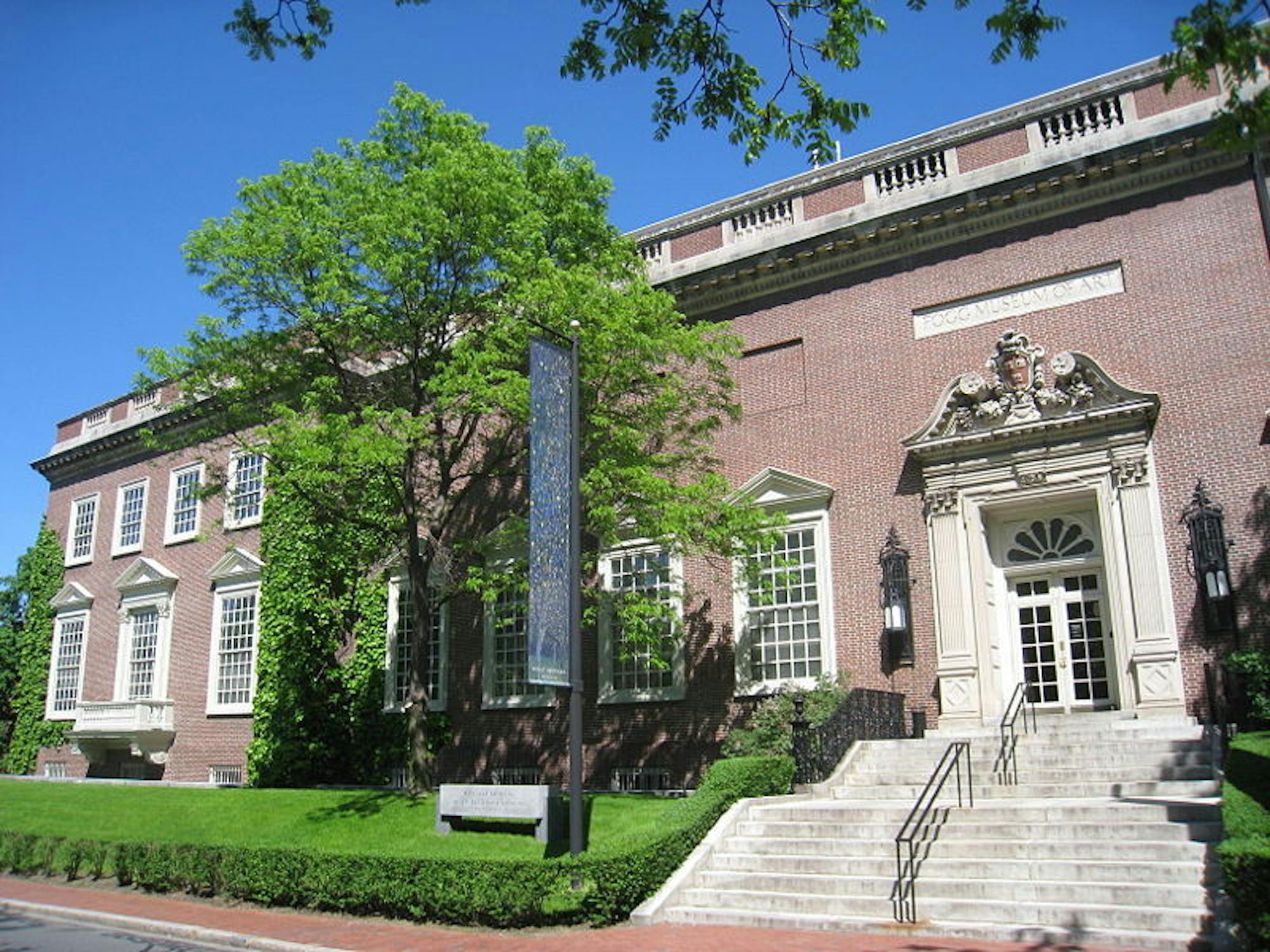In the Fogg Museum in Cambridge, one of the Harvard Art Museums, audiences can contemplate the origin of the human condition within an Abrahamic context. From Sept. 1, 2018 – Jan. 6, 2019, the museum hosts the “Adam and Eve” exhibition, which spans across time and space, including artworks from historical masters like Rembrandt as well as modern talents such as Diane Arbus. The diverse artworks nonetheless converge on shared themes, from the rethinking of the biblical femme fatale to the contemporary consequences of the fall of man.
Two curious pieces of artwork challenge the conventional understanding of Eve as the causation of the fall of man. The engraved “Adam and Eve” (c. 1510-20), by Italian artist Marcantonio Raimondi, characterizes Adam as the seductive fruit-giver, an abominated role traditionally assigned to Eve. Marcantonio was an engraver known for making reproductive prints based on existing paintings or designs. “Adam and Eve” is an example of one his reproductive prints, the existing painting being "Adam and Eve" (1511) by Raphael. In the engraving, Adam offers Eve several forbidden fruits, one of which Eve accepts and holds near her nose, as if skeptically assessing the fruit’s edibility. Marcantonio and Raphael both replaced the traditional Eve with a reinvented Adam as the biblical femme fatale. That being said, Raphael included a serpent with a female head to wind the top branches of the tree beside Eve, indicating Eve’s sin. Such juxtaposition of unorthodox and familiar narratives alludes to the less-popular belief that Adam is the primary sinner. According to the biblical tale, Eve, deceived by Satan, took the fruit, which she then gave to Adam to eat.
The bronze sculpture “Adam and Eve” by German sculptor Max Beckmann also reimagines Adam and Eve’s relative responsibility for the fall of man. Though designed by Beckmann in 1936, the sculpture was not cast until circa 1959, nine years after the artist’s death. The sculpture takes the form of a sitting Adam, who holds an Eve figurine to his ribs and bears a serpent that intertwines with his body. Beckmann’s miniature Eve curls up in an embryonic form and rests peacefully in Adam’s right hand while clinging to Adam’s right chest, resembling a breastfeeding infant nestling in her mother’s embrace. This maternal depiction of Adam and the specific placement of Eve near his ribs refer to the biblical teaching that Eve was literally born from Adam’s body, making Adam the source of original sin.
The rigidity to Adam’s pose portrays him as helpless, a forced executant of his fate. Beckmann’s Adam sits with his back straightened, knees and toes pointing forward, left arm lining seamlessly along his left torso and right arm forming an angle robotically. Such stiff posing is reminiscent of Egyptian sculptures of sitting pharaohs, known for their stylization of the human body. Adam's face shows an expression of agony. Altogether, Adam resembles a victim of sleep paralysis. The poor first man senses the serpent approaching Eve on his back and the imminent fall of man, but has no power to stop the befalling tragedy whatsoever. This characterization of Adam seems to free him from any accountability for the fall of man by emphasizing his lack of free will. That being said, the sculpture is not a complete outlier of the Abrahamic tradition. It does correspond to the Augustinian concept of total depravity, that the children of the first couple cannot choose but to be sinful, and the idea of predestination, that a person predestined to be unsaved cannot do anything to achieve salvation.
In comparison, a metaphorical portrait of Adam and Eve in a Diane Arbus (1923-1971) photograph delivers a much more hopeful understanding of a post-Adam-and-Eve human existence. The black-and-white photograph has a long and self-explanatory title: “Retired Man and His Wife at Home in a Nudist Camp One Morning in N.J. 1963. On the Television Set are Framed Photographs of Each Other.” The nude couple sit on two sofas in a softly lighted room. The depicted scene ingeniously incorporates both the socially unusual nudity and everyday elements. The photograph includes three nude pictures beside the couple: two of the husband and wife, as promised in the title, and a painting of a nude young woman on a wall. As bizarre as the prevalence of nudity in the photograph seems, it does not appear intentional — aside from its nude content, the photograph seems extremely ordinary. Narratively, the photograph depicts a retired couple who could theoretically be found in any middle-class family: smiling, relaxed and enjoying their leisurely life in a suburban house on a Sunday afternoon. Stylistically, the photograph demonstrates few formalistic elements: Almost every object faces the camera at a differently slanted angle, and no human subject exists as the focus of the camera lens. The couple sits on the sides of the photograph, leaving the middle area to the undistinguished television in the background. The combination of nudity and scenes overlap the Garden of Eden moments with mundane life, celebrating the carpe-diem idea of heaven on earth.
Although an Abrahamic story, Adam and Eve is also a popular metaphor that artists and writers from all religious backgrounds exploit to comment upon the human experience, and especially its ethical aspects. An exhibition showcasing the visual evolution of the Adam and Eve narrative reflects the shifts and turns in values related to diverse socio-philosophical themes, such as gender roles and human agency.
All artworks on display in the “Adam and Eve” exhibition are also online at the Harvard Art Museums' website.
Reimagining Adam and Eve: the biblical first couple seen by incisive eyes across centuries

The Fogg Museum, a component of the Harvard Art Museums, is pictured here.
Summary
In the Fogg Museum at Harvard, audiences can contemplate the origin of the human condition within an Abrahamic context at the Adam and Eve exhibit.
3 Stars





